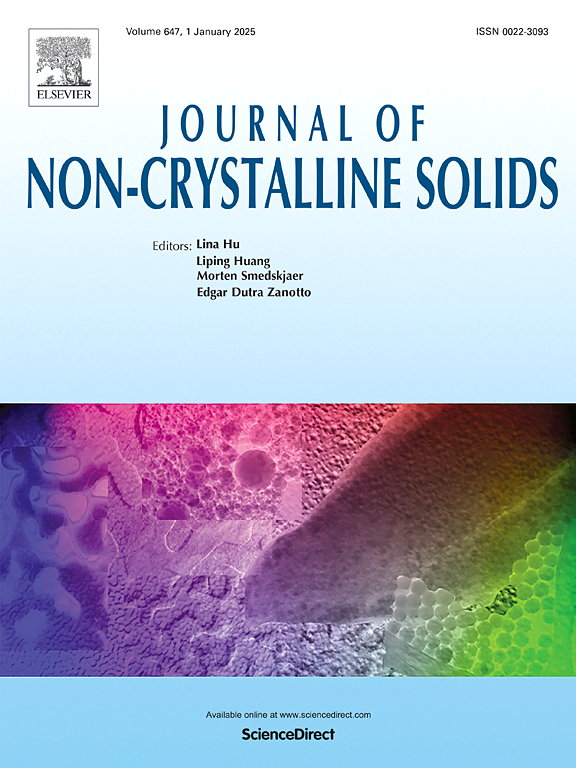YxZr1-xO2-0.5x纳米晶的结晶引起铝硅酸盐锂玻璃结构和离子交换性能的变化
IF 3.5
3区 材料科学
Q1 MATERIALS SCIENCE, CERAMICS
引用次数: 0
摘要
铝硅酸盐玻璃由于其优异的光学和机械性能,非常适合应用于手机屏幕领域。通过结晶和离子交换工艺可进一步提高玻璃的机械强度。本文在Li2O-MgO-Al2O3-SiO2体系中制备了YxZr1-xO2-0.5x纳米晶的高透明微晶玻璃。MgO的加入有利于提高玻璃的弹性模量,而弹性模量是提高玻璃机械强度的关键因素。YxZr1-xO2-0.5x晶相的析出对玻璃的结构和后续离子交换性能有较大影响。随着YxZr1-xO2-0.5x纳米晶的析出,Zr-O-Si带的含量减少,Q3单元的含量相应增加。随着YxZr1-xO2-0.5x纳米晶的析出,玻璃的结构发生了变化,导致了层间离子交换深度的增加。离子交换后,微晶玻璃的维氏硬度明显提高。本文章由计算机程序翻译,如有差异,请以英文原文为准。
Crystallization of YxZr1-xO2–0.5x nanocrystals induced structural and ion-exchange properties changes in lithium aluminosilicate glasses
Aluminosilicate glasses are well-suited for applications in the field of mobile phone screens due to their excellent optical and mechanical properties. The mechanical strength of glasses can be further improved by the crystallization and ion-exchange process. In this work, high transparent glass-ceramics with the precipitation of YxZr1-xO2–0.5x nanocrystals are prepared in the system of Li2O-MgO-Al2O3-SiO2. The introduction of MgO is beneficial for increasing the elastic modulus, which is a key factor in improving the mechanical strength of glass. Precipitation of YxZr1-xO2–0.5x crystalline phase has large effect on the structure and the subsequent ion-exchange properties of glass. With the precipitation of YxZr1-xO2–0.5x nanocrystals, there is a decrease in the content of Zr-O-Si band and a corresponding increase in the content of Q3 units. Structural changes in glass with the precipitation of YxZr1-xO2–0.5x nanocrystals leads to the increase of ion-exchange depth of layer. The Vickers hardness of glass-ceramics increases obviously after ion-exchange.
求助全文
通过发布文献求助,成功后即可免费获取论文全文。
去求助
来源期刊

Journal of Non-crystalline Solids
工程技术-材料科学:硅酸盐
CiteScore
6.50
自引率
11.40%
发文量
576
审稿时长
35 days
期刊介绍:
The Journal of Non-Crystalline Solids publishes review articles, research papers, and Letters to the Editor on amorphous and glassy materials, including inorganic, organic, polymeric, hybrid and metallic systems. Papers on partially glassy materials, such as glass-ceramics and glass-matrix composites, and papers involving the liquid state are also included in so far as the properties of the liquid are relevant for the formation of the solid.
In all cases the papers must demonstrate both novelty and importance to the field, by way of significant advances in understanding or application of non-crystalline solids; in the case of Letters, a compelling case must also be made for expedited handling.
 求助内容:
求助内容: 应助结果提醒方式:
应助结果提醒方式:


